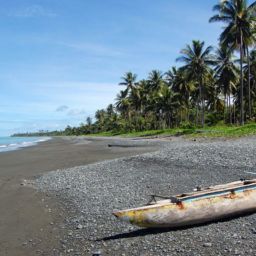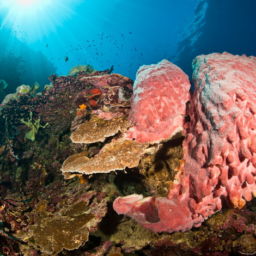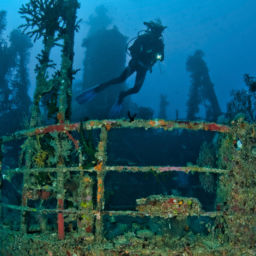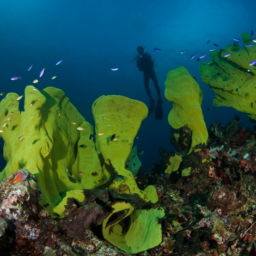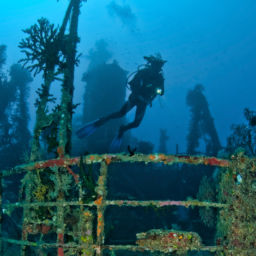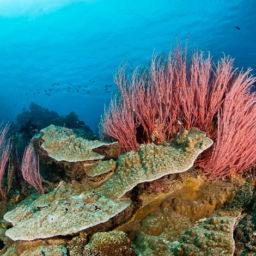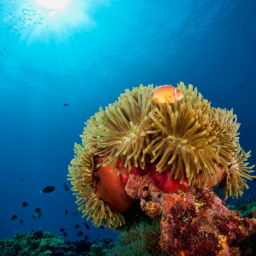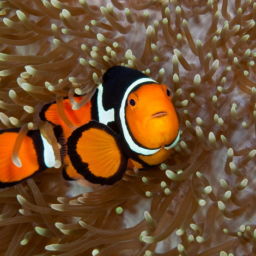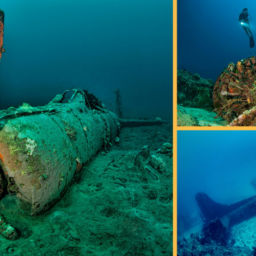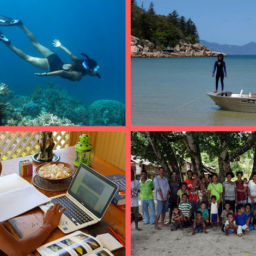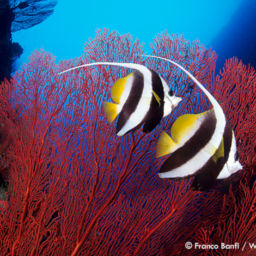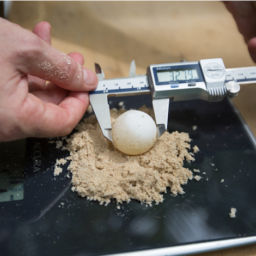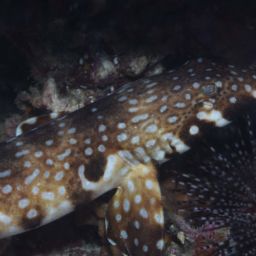Kimbe Bay, on the north coast of New Britain, Papua New Guinea, is world-renowned for marine biodiversity.
Nature Conservancy surveys have identified 860 species of fish, around 400 species of stony corals and 10 species of mammals. Conservation in Kimbe Bay is the key to preserving this underwater wonderland.
Traditional-style conservation
Traditional style conservation in Papua New Guinea is based on a strong allegiance to clan and tribe, and to this day, some 85 percent of the population still lives a village-based, subsistence lifestyle.
Very little land in PNG is privately owned. Most of it falls under the communal ownership of the tribes that are the basic fabric of the country. The tribes, led by tribal elders, share responsibility for stewardship of the land and coastal areas.
The land and the sea provide most of what the villages need for their subsistence lifestyle. Therefore, the tribes know intuitively that they must manage those resources in what we would call a sustainable manner.
The PNG stewardship system evolved simply and it worked extremely well for a very long time, but the late 1980’s brought change to Kimbe Bay. Large-scale development of palm oil plantations and increased population density changed the local dynamics forever.
Preserving Kimbe Bay
The founders of Kimbe Bay’s Walindi Plantation Resort, Max and Cecilie Benjamin, are trained agronomists. By the early 1990s it was becoming obvious to them that, if left unchecked, those changes could only degrade the pristine environment of Kimbe Bay.
So, in 1993 they joined forces with the local government and The Nature Conservancy (TNC) to develop a long-term conservation and sustainable-tourism development strategy for the bay.
The next year, TNC, supported logistically by Walindi, conducted an initial Rapid Ecological Assessment (REA) of the bay’s coral reefs. These quantified for the first time the full magnitude of Kimbe’s marine diversity.
To safeguard that incredible diversity, a two-pronged strategy was developed consisting of the establishment of Mahonia Na Dari and Locally Managed Marine Areas (LMMAs).
Mahonia Na Dari
Unusually for Papua New Guineans, the people of New Britain have a limited connection with the rich waters that surround the island. Few children learn to swim and many residents of inland villages have never even seen the ocean.
Working with TNC and the European Union Islands Regional Environmental Program, the Benjamins established Mahonia Na Dari, which means Guardians of the Sea, in 1997 on land they owned next to the resort.
Mahonia works to understand and conserve Kimbe Bay’s unique marine environment, educating local young people so that they can play a part in its protection and conservation. The organization does this through its Marine Environment Education Program (MEEP). The program introduces students, many of whom have no experience of the marine environment, to the water. They can see things first-hand and better understand the need to protect and conserve Kimbe Bay.
MEEP has been very successful, with elementary, primary and secondary schools all using versions of the program. There’s a teacher’s version as well so they can conduct classes in their schools. Since its establishment in 1997, Mahonia Na Dari’s programs have directly or indirectly benefitted more than 200,000 people.
Locally Managed Marine Areas
Locally Managed Marine Areas (LMMAs) are a well-established strategy throughout the Pacific Islands. Scientists generally consider them the best way to help local communities self-manage their marine resources. However, in an area such as Kimbe Bay, locals consider the sea an unlimited resource. LMMAs in isolation would have little chance of success.
The entire community must embrace the concept for it to work. Without the MEEP programs run by Mahonia this simply would not happen, hence the two-pronged approach.
Poison-rope fishing
A crucial component of the overall MEEP and LMMA programs was to halt and eventually eliminate the spread of “poison-rope” fishing and prevent the encroachment of dynamite fishing.
Poison-rope fishing uses the naturally occurring derris plant. Fishermen mash the roots of the plant into a white pulp with a rock. Then, they jam the pulp into the coral by swimming down to the reef top. The pulp of the derris root contains the poison rotenon. It kills small fish and coral polyps, but forces larger fish to the surface where it is easy to catch them.
With no real awareness of rotenon’s destructive impact, poison-rope fishing seems to be an effective way to catch fish. But in reality, it can be as destructive as cyanide fishing.
Dynamite fishing in PNG is not the scourge it is in other Southeast Asian countries. But it does occur in Kimbe Bay from time to time. Fishermen may employ the practice on an opportunistic basis, using dynamite from old WWII ammunition found in the rainforest and then shoved into beer bottles.
Provincial government funding for boats and engines enables the villagers to monitor their no-take and open-area zones and keep illegal fishermen at bay, while Mahonia provides periodic audits to keep the system honest and encourages sustainable fishing practices such as hand lines and spears.
There are now eight LMMAs in the Kimbe Bay area, with more planned. They have proved to be the single most effective way to manage the environment.
By guest author Don Silcock
Don Silcock is an Australian underwater photographer and photojournalist based in Bali who has dived many of the best locations across the Indo-Pacific. To learn more about Kimbe Bay or Papua New Guinea, check out Don’s Complete Guides on the links provided.


